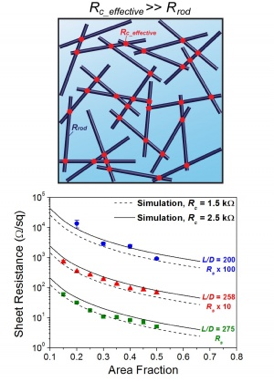Science
Tiny diamonds to boost treatment of chemoresistant leukemia: Novel discovery by scientists from NUS and UCLA enhances delivery and retention of leukemia drug, paving the way for nanodiamonds to be used for chemotherapeutics

By binding multiple molecules of Daunorubicin with nanodiamonds, scientists from NUS and UCLA managed to boost the delivery of the drug to leukemic cells and retain the drug within the cells to combat the cancer.
- Read more
- 323 reads
Airbrushing Could Facilitate Large-Scale Manufacture of Carbon Nanofibers

This image illustrates how researchers use an airbrush to grow vertically aligned carbon nanofibers. Click to enlarge.
- Read more
- 314 reads
DSCOVR Mission Moves Forward to 2015 Launch

Solar Flares captured by GOES 15 SXI.
- Read more
- 464 reads
Comet Found Hiding in Plain Sight

With the help of NASA's Spitzer Space Telescope, astronomers have discovered that what was thought to be a large asteroid called Don Quixote is in fact a comet.
- Read more
- 485 reads
New center to better understand human intelligence, build smarter machines: NSF awards $25 million to MIT-based center to advance brain understanding

The hope is that through building intelligent machines, we can better understand ourselves.
- Read more
- 543 reads
NASA Evaluates Four Candidate Sites for 2016 Mars Mission

The process of selecting a site for NASA's next landing on Mars, planned for September 2016, has narrowed to four semifinalist sites located close together in the Elysium Planitia region of Mars. The mission known by the acronym InSight will study the Red Planet's interior, rather than surface features, to advance understanding of the processes that formed and shaped the rocky planets of the inner solar system, including Earth.
- Read more
- 460 reads
Penn develops computer model that will help design flexible touchscreens

Researchers simulate electrical resistances (lines) to match experimental data (points) and extract the contact resistance.
- Read more
- 340 reads
Engineers make golden breakthrough to improve electronic devices

Vikas Berry, William H. Honstead professor of chemical engineering, and his research team have studied a new three-atom-thick material -- molybdenum disulfide -- and found that manipulating it with gold atoms improves its electrical characteristics.
- Read more
- 327 reads
Bizarre Alignment of Planetary Nebulae

Astronomers have used ESO's New Technology Telescope and the NASA/ESA Hubble Space Telescope to explore more than 100 planetary nebulae in the central bulge of our galaxy. They have found that butterfly-shaped members of this cosmic family tend to be mysteriously aligned — a surprising result given their different histories and varied properties.
- Read more
- 445 reads
Human Rights
Fostering a More Humane World: The 28th Eurasian Economic Summi

Conscience, Hope, and Action: Keys to Global Peace and Sustainability

Ringing FOWPAL’s Peace Bell for the World:Nobel Peace Prize Laureates’ Visions and Actions

Protecting the World’s Cultural Diversity for a Sustainable Future

Puppet Show I International Friendship Day 2020


